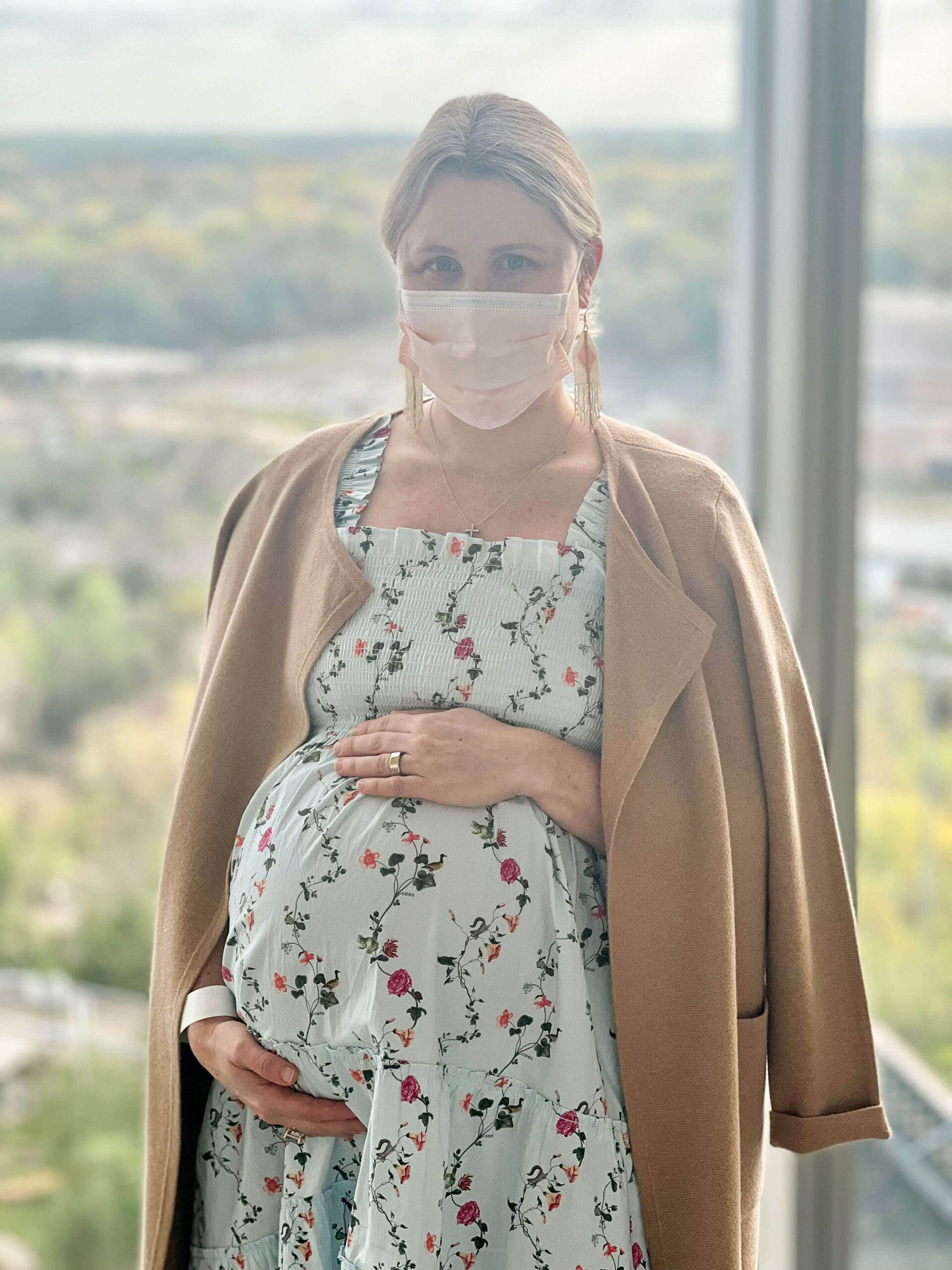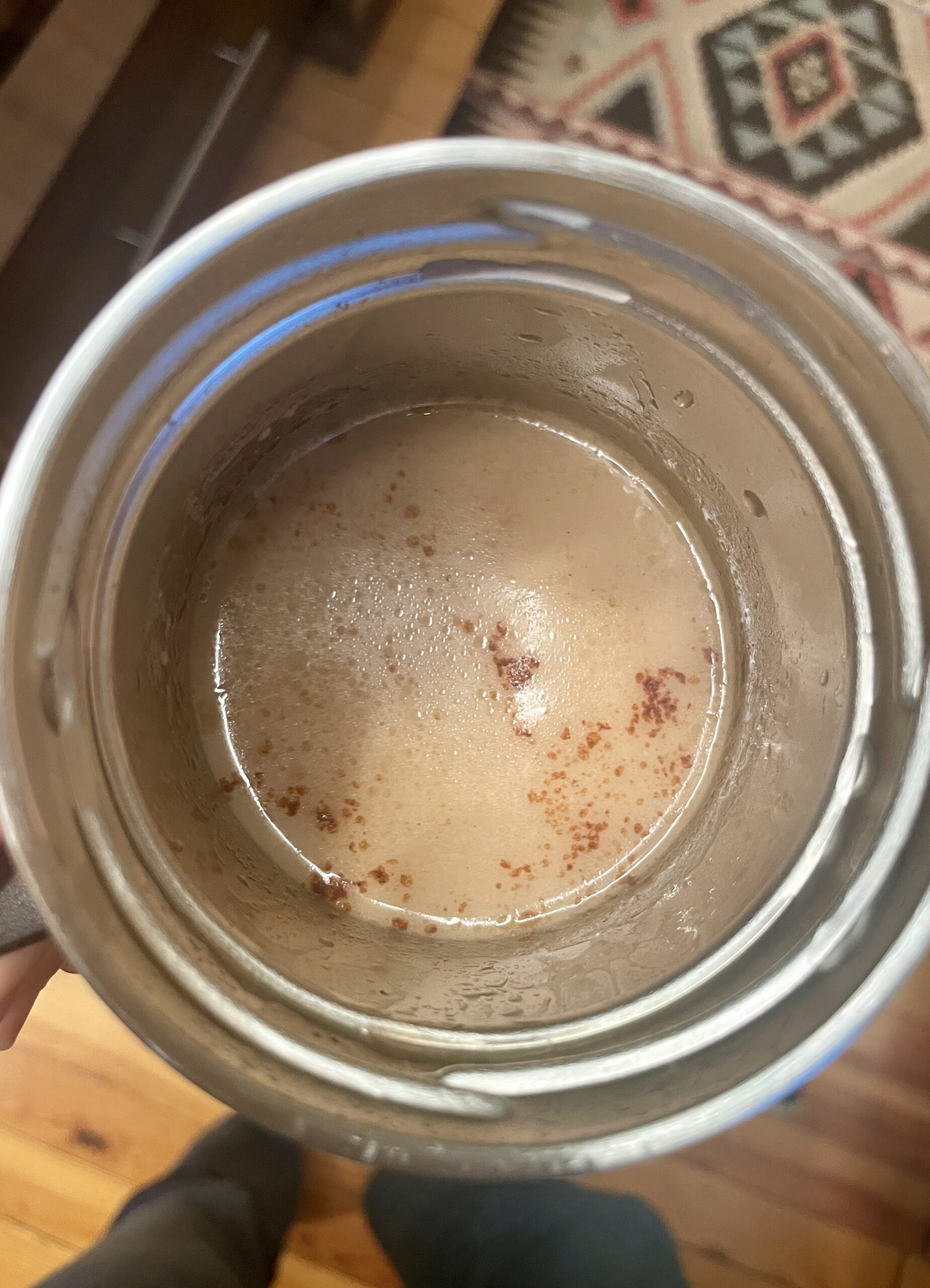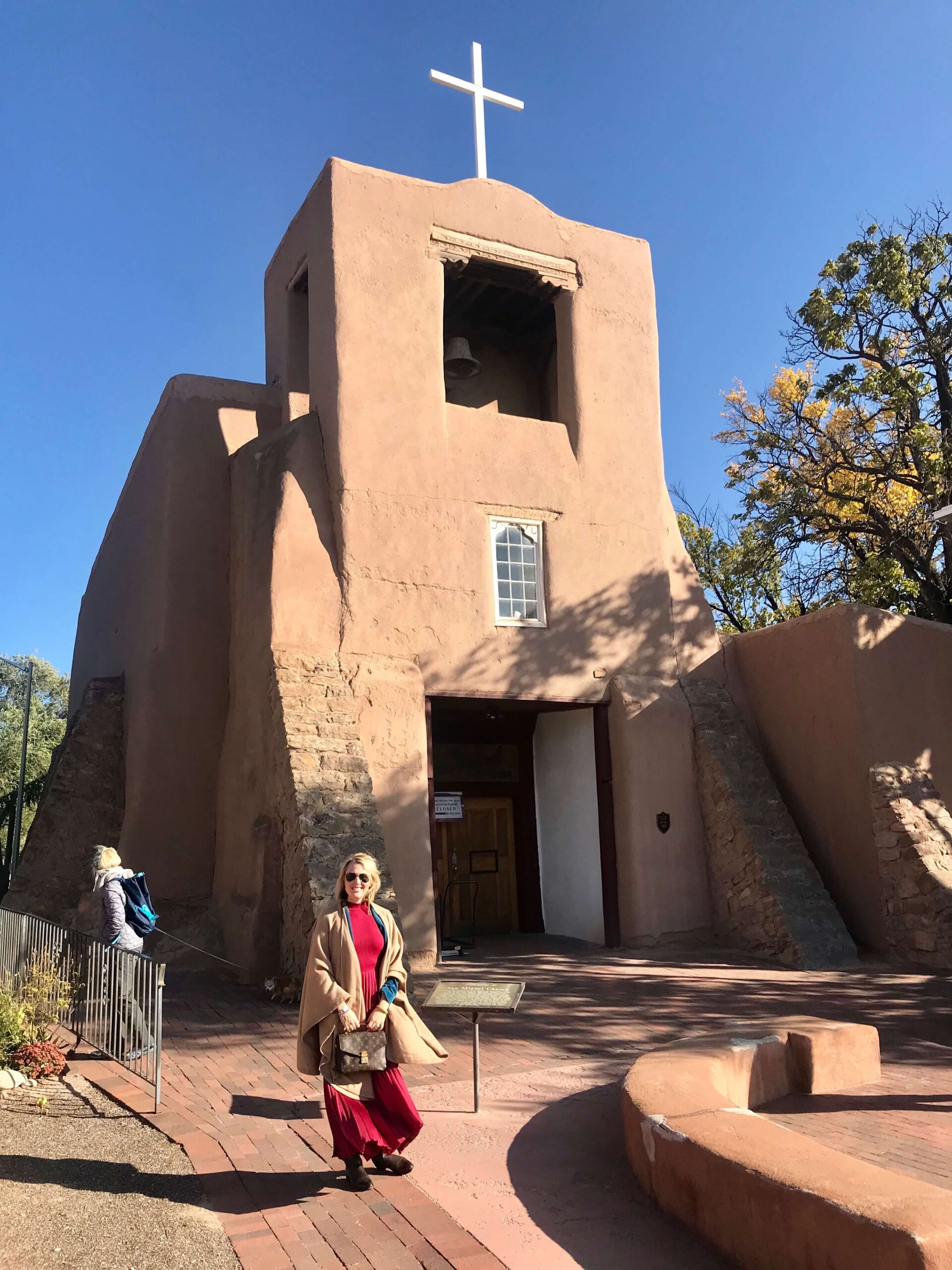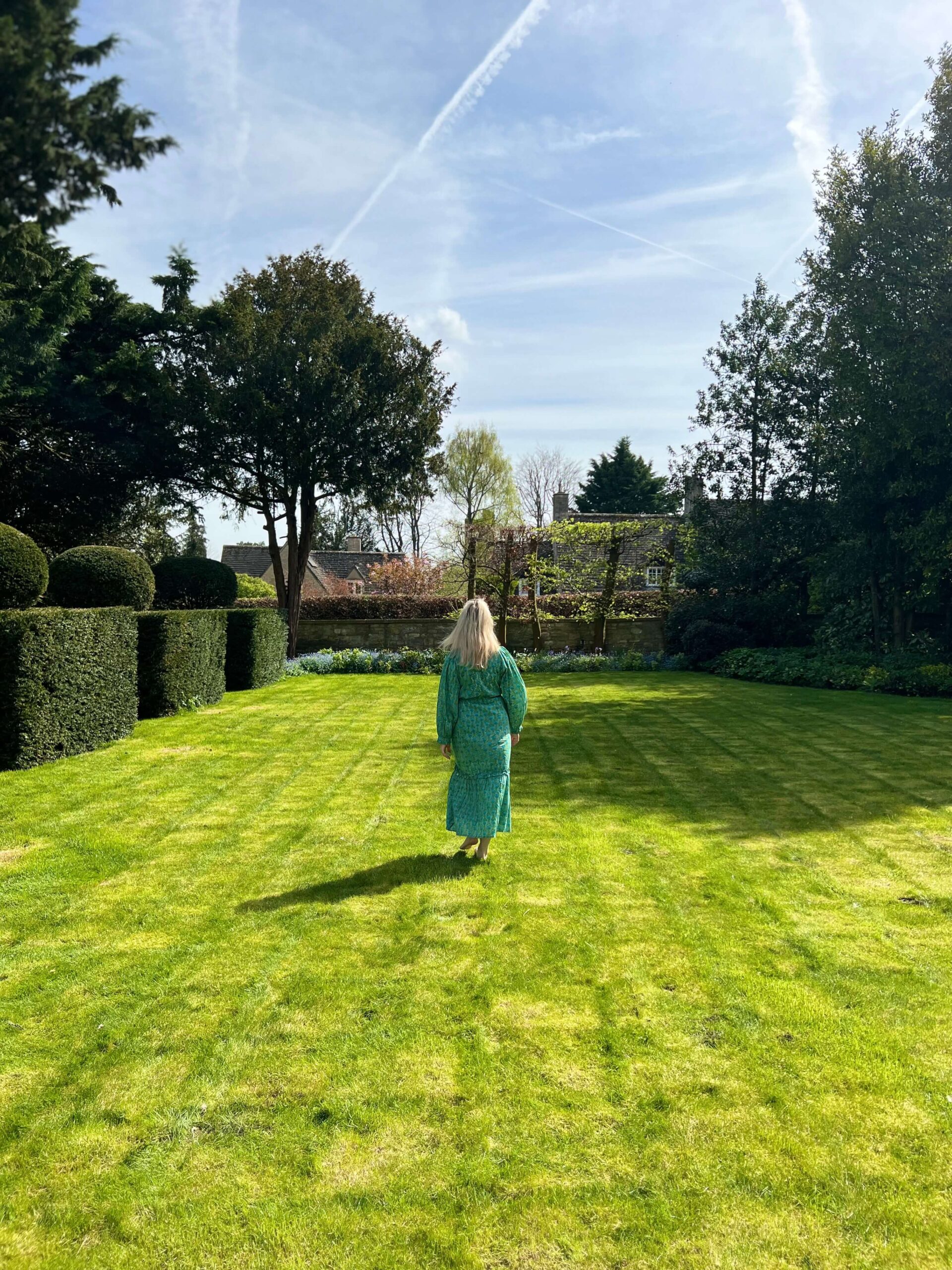… and I am talking about the OURA ring.
I started using an Oura in 2020. I was a newlywed, an essential, front-line provider during the COVID-19 pandemic, and living in a city only a block away from significant cultural transition. My usual techniques for stress management were not working so I decided to give the Oura ring a try. I have never looked back.
Pre-Oura Ring
Prior to the Oura ring, my normal routine was to workout a minimum of 1h/day. It was always intense and I would feel guilty if I had to cut my workout short. I was dedicated to my Apple Watch data and ensured I hit a minimum of 10k steps/daily. Resting felt weak and I wanted to stay “strong.”
Sleep was never my priority because I could make it through the day without a caffeine addiction, so I assumed I was on track. Hint – if your sleep is inconsistent between the week/weekend you are probably not getting enough weekday sleep!
Oura Metrics
Once I leaned into the ring’s data I began to make a shift – in all areas, hormone regulation, sleep, and resiliency. However, the largest shift came from giving myself permission to actually take the advice I was being given.
Every morning the Oura provides a Readiness and a Sleep score, based on variables from overnight rest and activity from the day before. Variables such as heart rate variability (HRV), body temperature, sleep efficiency, REM vs. Deep Sleep, and activity help to populate these scores.

My goal is to always be >85% in both metrics and if one is low, then I use that as a cue to reformat my day. Example:
Low Readiness: I will skip or adjust my scheduled workout opting for more light stretching or movement. I will also try to find time for rest, meditation, or something small that regenerates my mind.
Low Sleep: When my sleep score is low I make daily adjustments to ensure I get a good nights rest. This might include being mindful of caffeine/alcohol intake, what time I exercise, blue light in the evening, when I go to bed, etc.
The Oura is incredibly sensitive and provides valuable insight into your body. Since it analyzes body temperature, respiratory rate, etc. it can tell when you are on the verge of getting sick (and in 3 years, it has never been wrong). I follow these morning instructions regularly. Paying attention to cues that align with your body’s need will improve your overall health. It is a cycle of sustainability: an appropriate rest/activity balance leads to better sleep which provides a happier, more enriched life.
Key Data Points
- Heart Rate Variability – reflects how resilient your body is to adapt to stress.
- Sleep Efficiency – I like to make sure I am within a certain window of efficiency and if my sleep is off (ex. I did not get enough REM sleep) then I think back to the night before and what I might have done that could have impacted that score.
- Menstrual cycle – This metric helps me to know what point I am in within my cycle, and if I should push or rest during this time. Cycle syncing is a fascinating topic (and one we will cover on AWH), but for now know that every week of your “cycle” should correlate with different movement and nutritional goals to support you body.
Sleep Changes
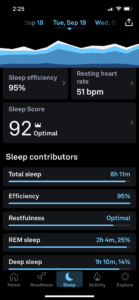
I average >90% sleep efficiency, but this practice took me weeks to drill down what worked for my body. Granted everyone is going to have a slightly different routine or preference regarding sleep habits. The following are what I tried to find my sleep balance:
- Weighted blanket. This ended up not working for us, however I have known others who have had success with the weight.
- Timing of when my husband comes to bed. This has been a permanent change. If we do not goto bed at the same time, then my husband waits at least an hour before coming to bed so that I can transition to deep sleep without waking up.
- Room temperature. We keep our house between 68-72 for optimal sleeping temperatures.
- Fresh air. Except on the hottest of summer days, we always have a window cracked for fresh air to come inside.
- Sound machine. My favorite: LectroFan with brown noise.
- Hatch. We loved our Hatch until we had our daughter and switched to the LectroFan.
- Organic bamboo sheets. Obsessed. We only sleep on temperature regulating, Cozy Earth sheets now.
- Dark room. If your room isn’t dark enough I highly recommend this Somo eye mask.
- Timing. I try to stay within my recommended Oura sleep range, which for me personally is starting to wind down around 930, and trying to goto sleep by 10p.
- Blue Light. I wear blue light glasses in the evening, and try to limit my screen time at least one hour before bed. My preference is to read a real book or listen to the Hallow app right before bed with my legs up the wall – which helps to improve circulation, unwind your body, and decrease stress before bedtime.
- Red Light. I turn my phone to red light at 7p to help decrease any exposure to blue light (which is known to disrupt your circadian rhythm) before bed.
Small, actionable changes, built up over time, got me to a place where I found my “sweet spot” for sleep balance.
OURA + FERTILITY
I credit the Oura ring for helping me to get pregnant after my 2020 miscarriage. By putting in the work to find my optimal sleep/readiness balance, I was able to decrease the amount of external stress in my life. This put my body in a symbiotic state, open to accept, and keep, a pregnancy.
Metrics from the Oura Ring also helped me have an easy pregnancy. Since my pre-pregnancy sleep efficiency was >90% I was able to use this to my advantage to sleep soundly (up until the night I actually went into labor). I worked full-time and still had enough energy to come home and take a nightly walk. I stayed active into delivery – including walking 15K steps the day my water broke. I am not unique. However, I am a data driven. The data from the Oura ring truly transformed my life, my health and has made me a happier, more balanced mother.
LAST TIPS
For those coming from an Apple Watch or FitBit background, you may have a slight learning curve with the Oura. The main difference being the accessibility of the data during the day. While the Oura syncs with your phone all day long (you can check metrics on your phone), it is a beautiful piece of jewerly – so you will not see the “numbers” when you look down. This took some getting used to as I liked looking at my Apple Watch and seeing my daily stats.
However, once I realized constantly checking those numbers was actually triggering, I began to recognize the immense value in the Oura. I could access the data – when I chose to do so – however, it did not dictate my life. Rather, I learned to just enjoy and live life … checking my numbers only twice, in the morning and evening.
Ps… did I mention it is a GORGEOUS ring! I absolutely love wearing it as it is light weight and fashionable. I only take it off to charge 1-2 times a week. 10/10 recommend.
A final note, I recognize the Oura ring is a financial commitment, but as Benjamin Franklin states, “An ounce of prevention is worth a pound of cure.”
Click here for $40 off of your Oura ring.
As an Amazon Associate I earn from qualifying purchases. I only share products that I personally own, use and love.


